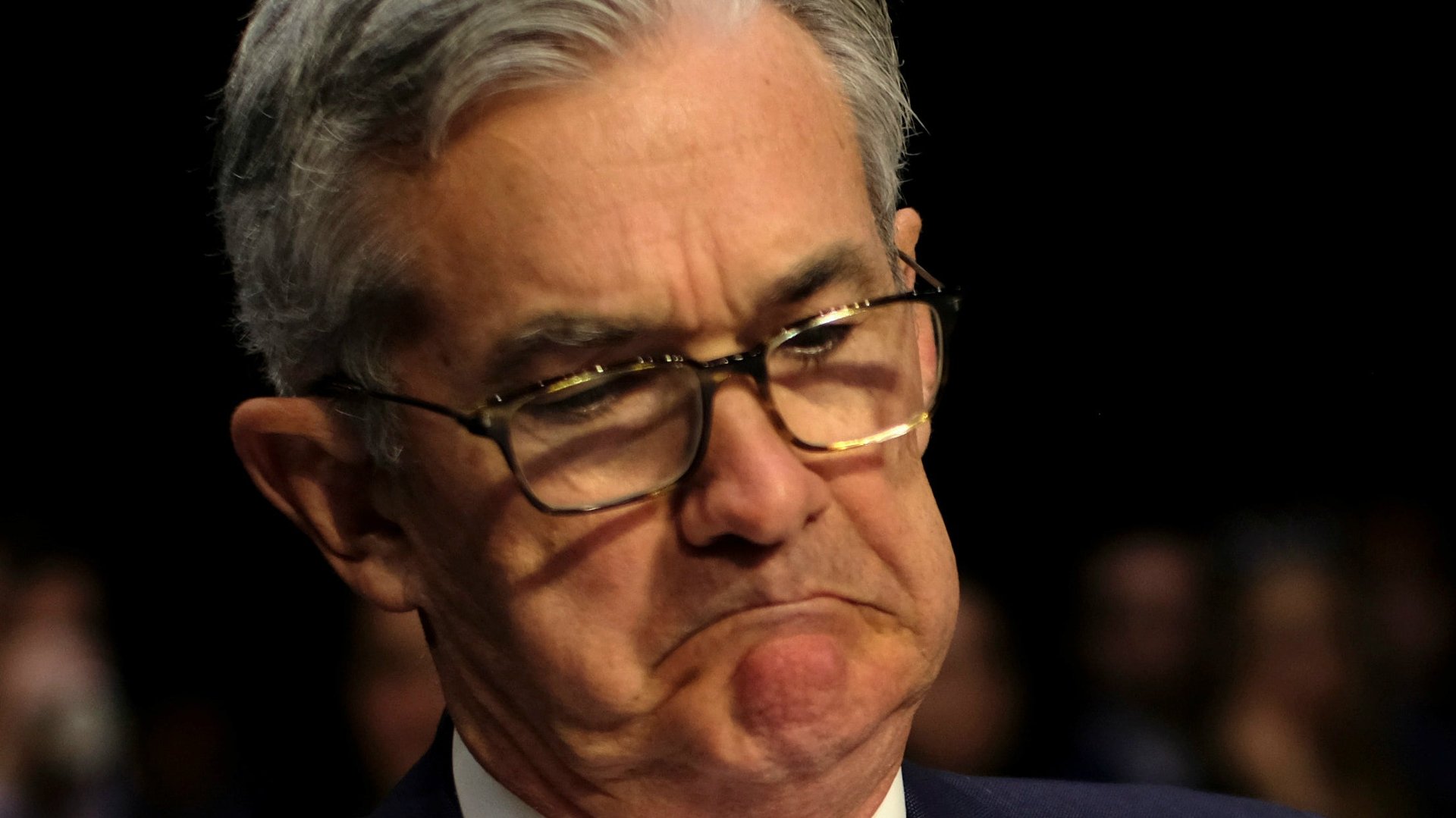Actually, deficits do matter, says Fed chairman Jerome Powell
To US politicians on both sides of the aisle content to luxuriate in seemingly infinite debt, Federal Reserve chairman Jerome Powell has a simple warning: “Federal government debt is on an unsustainable path.”


To US politicians on both sides of the aisle content to luxuriate in seemingly infinite debt, Federal Reserve chairman Jerome Powell has a simple warning: “Federal government debt is on an unsustainable path.”
Speaking today (Feb. 26) at his semiannual congressional visit, Powell spoke out against the government’s growing levels of debt, which are spiraling at a much greater rate than GDP growth.
Defaulting on these debts—as the heterodox macroeconomic theory Modern Monetary Theory (MMT) proposes—is simply unthinkable, Powell said. (They now total just over $22 trillion, with the annual federal deficit on course to top $1 trillion in the next few years.) “It’s beyond even consideration,” he said. “The idea that the US would not honor all of its obligations and pay them when due is something that can’t even be considered.”
Proponents of MMT think otherwise. This model suggests printing more dollars to cover US debt obligations, allowing the government to continue running with a deficit in perpetuity. (The idea relies a little on the Fed continuing to keep rates low.) Because the US borrows in US dollars, the theory goes, the deficit doesn’t matter as much as it does for other countries.
Powell had some words for that line of thought, too. “The idea that deficits don’t matter for countries that can borrow in their own currency I think is just wrong,” he said. Instead, politicians should be looking to “spend less or raise more revenue.”
MMT proponents shouldn’t be looking to the Fed to make their model work, Powell said, adding he thinks it is up to politicians to work out how to tackle an increasingly heavy debt burden—and not the central bank. “To the extent that people are talking about using the Fed—our role is not to provide support for particular policies,” he said. “Decisions about spending, and controlling spending and paying for it, are really for you.”
The US debt limit is set to come back into effect March 2—unless Congress introduces legislation permitting it to raise the ceiling even higher.